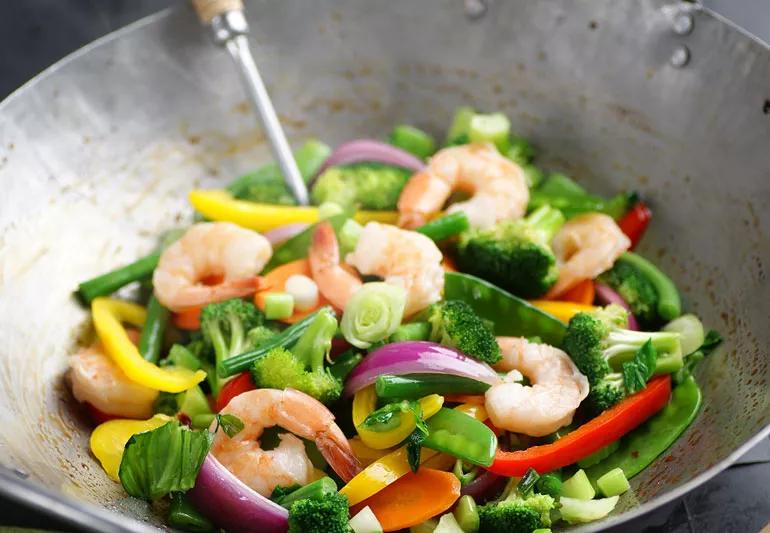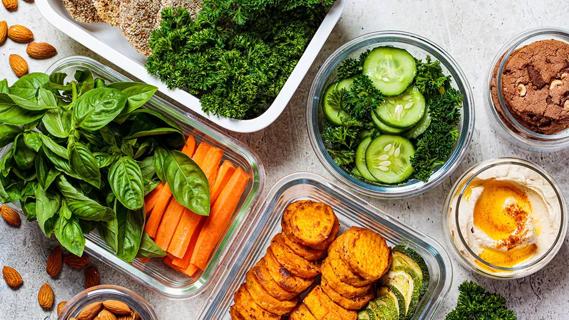How to order — and prepare — nutritious Asian meals

Love Chinese, Thai, Japanese, Korean or Vietnamese food? Asian cuisine offers a rainbow of vegetables and lean proteins. But hidden salt, fat and other stealthy additives can quickly sabotage this heart-healthy fare. Be good to your heart by following these tips from dietitian Kate Patton, MEd, RD, CSSD, LD.
Advertisement
Cleveland Clinic is a non-profit academic medical center. Advertising on our site helps support our mission. We do not endorse non-Cleveland Clinic products or services. Policy
Asian menus typically contain many heart-friendly ingredients. But the preparation may be high in fat and include not-so-healthy additives. Try these tips for health-conscious ordering:
Start off with fresh ingredients. Foods that are local and in season offer optimal nutritional benefits. (Add bok choy, napa cabbage, bean sprouts and watercress to your shopping list.)
Then follow these tips for healthy Asian cooking.
Stir-fry is your friend. When you need to whip up a quick but nutritious meal after a busy day at work, gather all of your favorite veggies and some lean meat.
Advertisement
Stock your pantry with Asian flavors. These flavor-enhancing ingredients will eliminate the need for MSG, extra sodium and extra sugar to boost flavor.
Control portions with dim sum. The bite-sized portions and elegant appearance of steamed buns/dumplings and pot stickers make for a delicious, healthy meal choice.
Pull out the soup pot. Soups — think beyond egg drop and wonton — play a major role in Asian cuisine.
Whip up sauces from scratch. Control the type and amount of each ingredient going into your meal by making your own sauces. You’ll avoid high levels of sugar, sodium, fat, monosodium glutamate (MSG) and other chemicals typically found in store-bought Asian sauces.
Go meatless with soy. You don’t need to be a vegetarian to enjoy the benefits of tofu and edamame, both rich in protein and calcium.
Advertisement
Round out the meal well. Serve your meals on a bed of steamed brown rice, buckwheat or edamame noodles. Satisfy your sweet cravings with fresh fruit.
As with other cuisines, when you prepare Asian food, make sure you’re getting a good balance of nutrients. Be aware of exactly what and how much you’re eating, and enjoy a heart-healthy feast.
Advertisement
Learn more about our editorial process.
Advertisement

With a focus on internal cues for hunger and fullness, this eating style may revolutionize your relationship with food

Review the ingredients, watch for sugar and fat, and choose one with the right amount of protein for your needs

A typical recommended balanced diet is half fruits and veggies, a quarter protein and a quarter grains

Foods high in protein, fiber and water can help keep hunger at bay

This quirky food trend is harmless, as long as you’re getting enough protein, fiber and healthy fats

This vital nutrient helps your brain and body in many ways — and most of us need more of it

Wrapped or sandwiched, try to choose fillings and condiments that are minimally processed, low in saturated fat and high in fiber

Set yourself up for success by carefully choosing your recipes, storage containers and prepping day

The best parenting style balances enforcing rules and showing plenty of love

Tips include cutting back on sugar, focusing on exercise and managing stress

It can be harder to let go when you’ve invested time, energy and emotions — but it might be the healthier choice long term